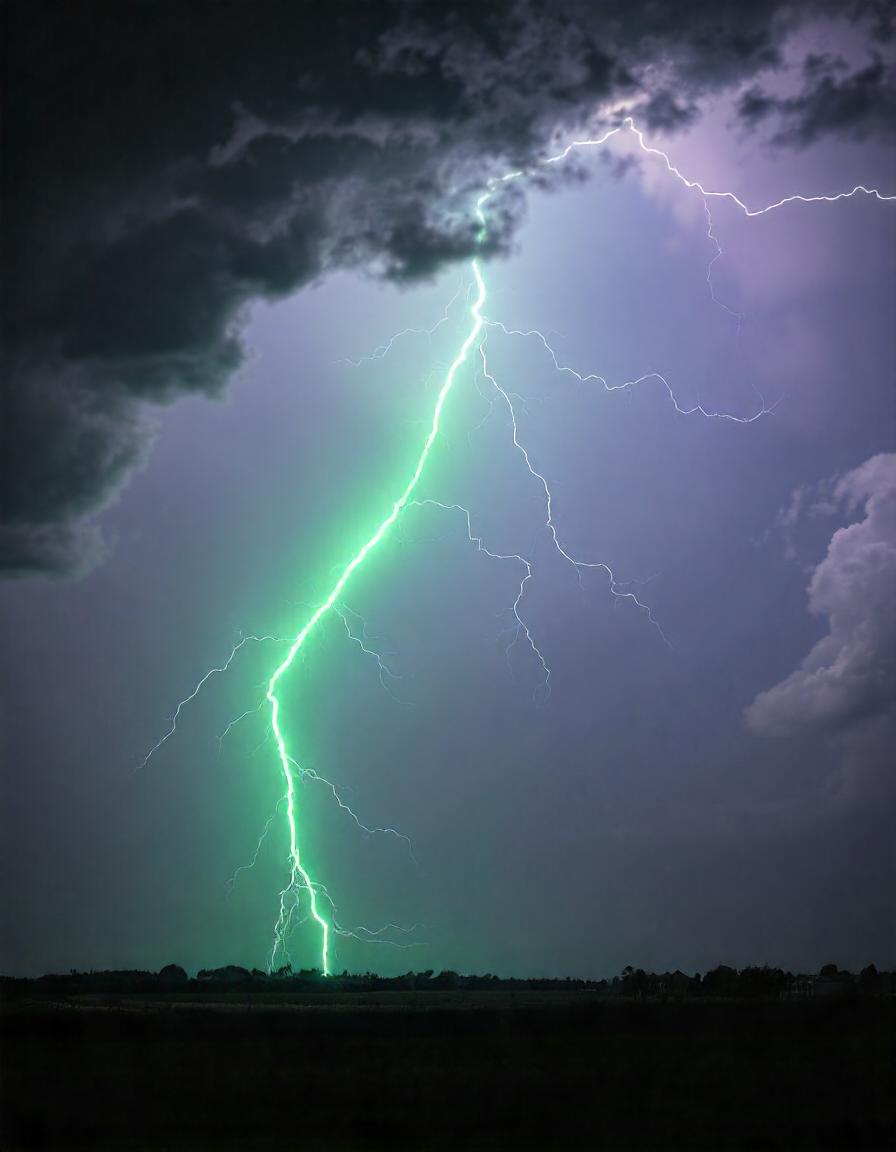Lightning, a breathtaking display of nature’s raw power, is often associated with brilliant white or bluish streaks lighting up the sky. However, reports of green lightning have captured the imagination of many, leaving both scientists and enthusiasts intrigued. What causes green lightning? What makes it different from the typical lightning we see during thunderstorms? Let’s explore the phenomenon, its implications, and the myths surrounding it.
What Causes Green Lightning and How It Differs from Ordinary Lightning
What causes green lightning? The main distinction between green lightning and typical lightning lies in their color, which stems from environmental conditions. While ordinary lightning gets its color from the ionization of air molecules, green lightning involves additional factors:
- Atmospheric Composition: Green lightning often occurs in areas with a high concentration of specific gases or particles that can alter the light’s wavelength.
- Refraction and Scattering: The green hue may result from light scattering due to water droplets or ice crystals in the storm cloud.
- Proximity to Volcanic Eruptions: Green lightning is frequently reported near active volcanic eruptions, where the sulfuric and other volcanic gases in the atmosphere contribute to the unusual color.
What Causes Green Lightning to Take on Its Unique Color?
To understand what causes green lightning, it’s essential to consider the specific atmospheric conditions that influence its color. Green lightning is believed to occur when lightning interacts with particular gases or particles suspended in the air. During volcanic eruptions, for instance, the ash plume is rich in sulfur dioxide, which can tint the lightning flash green when illuminated. In extreme thunderstorms, ice particles and water droplets can also scatter light in a way that produces a green hue.
Is Green Lightning a Sign of Danger?
You might wonder whether what causes green lightning makes it more hazardous than ordinary lightning. The danger posed by green lightning is no greater than that of regular lightning. Both forms carry the same risks, including the potential to cause fires, injuries, or fatalities if they strike a person or structure.
However, the conditions that produce green lightning—like severe storms or volcanic eruptions—can be dangerous. Understanding what causes green lightning helps us stay aware of these extreme environments and take necessary safety precautions.
Myths and Misconceptions About What Causes Green Lightning
Despite its rarity, what causes green lightning has led to various myths and misconceptions. Let’s debunk five of the most common ones:
- Myth: Green Lightning Is a Supernatural Omen
Fact: While its appearance may seem otherworldly, what causes green lightning can be explained by science. - Myth: It Only Occurs in Specific Regions
Fact: Green lightning can occur anywhere under the right atmospheric conditions. - Myth: It Always Signals Impending Disaster
Fact: While it often coincides with extreme weather or volcanic activity, what causes green lightning is not a direct harbinger of doom. - Myth: It Is a Different Type of Lightning
Fact: Green lightning is not fundamentally different; what causes green lightning is simply a result of environmental factors. - Myth: It’s More Dangerous than Regular Lightning
Fact: Green lightning poses no greater risk than typical lightning. The danger lies in what causes green lightning—the conditions surrounding its formation.
The Scientific Explanation of What Causes Green Lightning
The question of what causes green lightning can be answered through science. The green hue typically arises from:
- Volcanic Gases: During eruptions, sulfur dioxide and other gases interact with lightning to produce a green flash.
- Light Scattering: In severe thunderstorms, ice or water particles scatter the light, altering its wavelength to appear green.
- Unique Atmospheric Conditions: A combination of gases and particles in the atmosphere under extreme weather can influence the color of lightning.
Understanding what causes green lightning highlights the complexity and beauty of natural phenomena.
Conclusion
Green lightning, while rare and fascinating, is a natural phenomenon rooted in atmospheric science. The question of green light comes down to the unique environmental factors present during its occurrence, often linked to volcanic eruptions or severe storms. Although it may appear mysterious or ominous, green lightning carries the same risks as ordinary lightning.
By understanding what causes green lightning and dispelling myths, we can appreciate its beauty without fear. The next time someone wonders about this rare occurrence, you’ll know that it’s not a supernatural sign but one of nature’s awe-inspiring displays.
